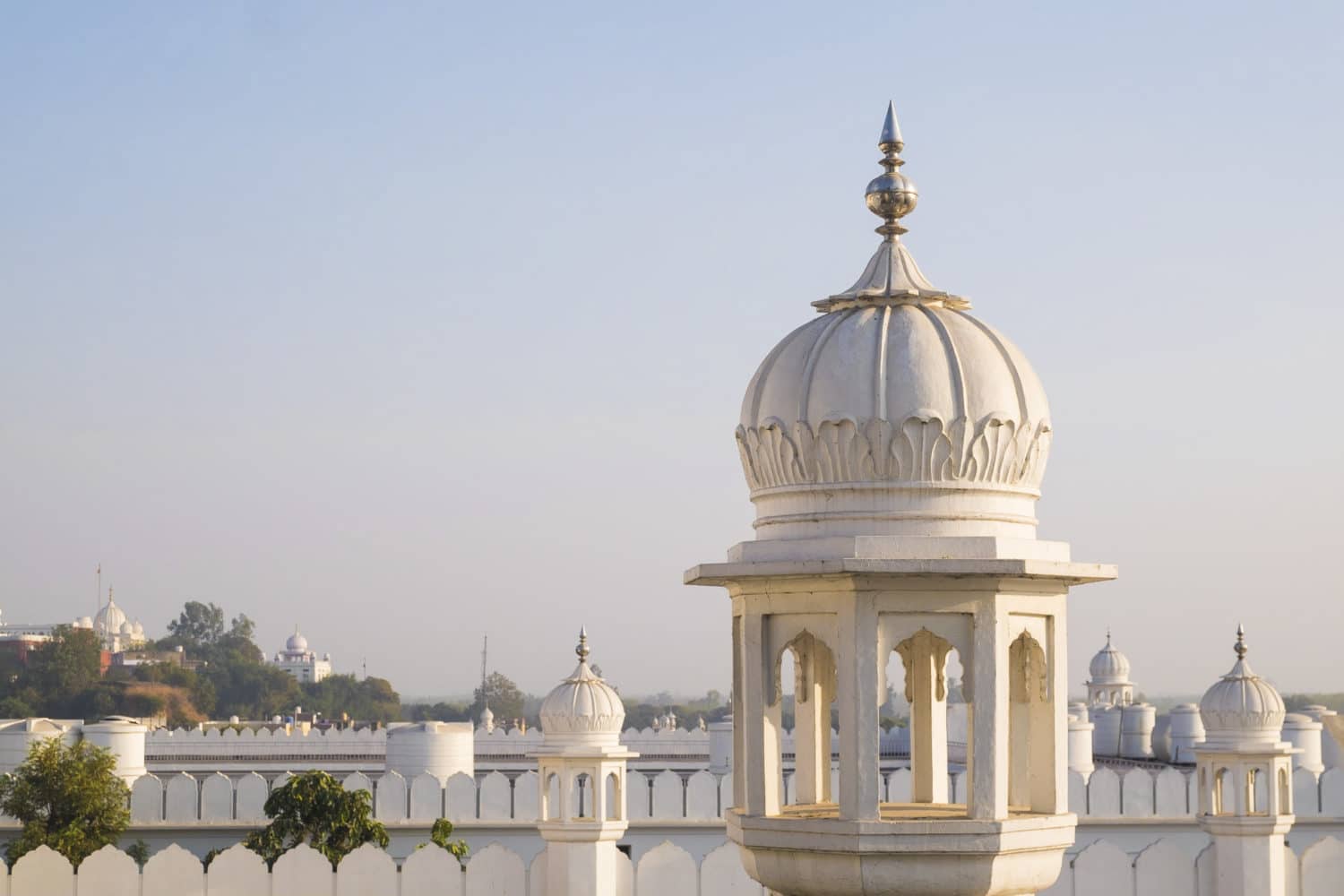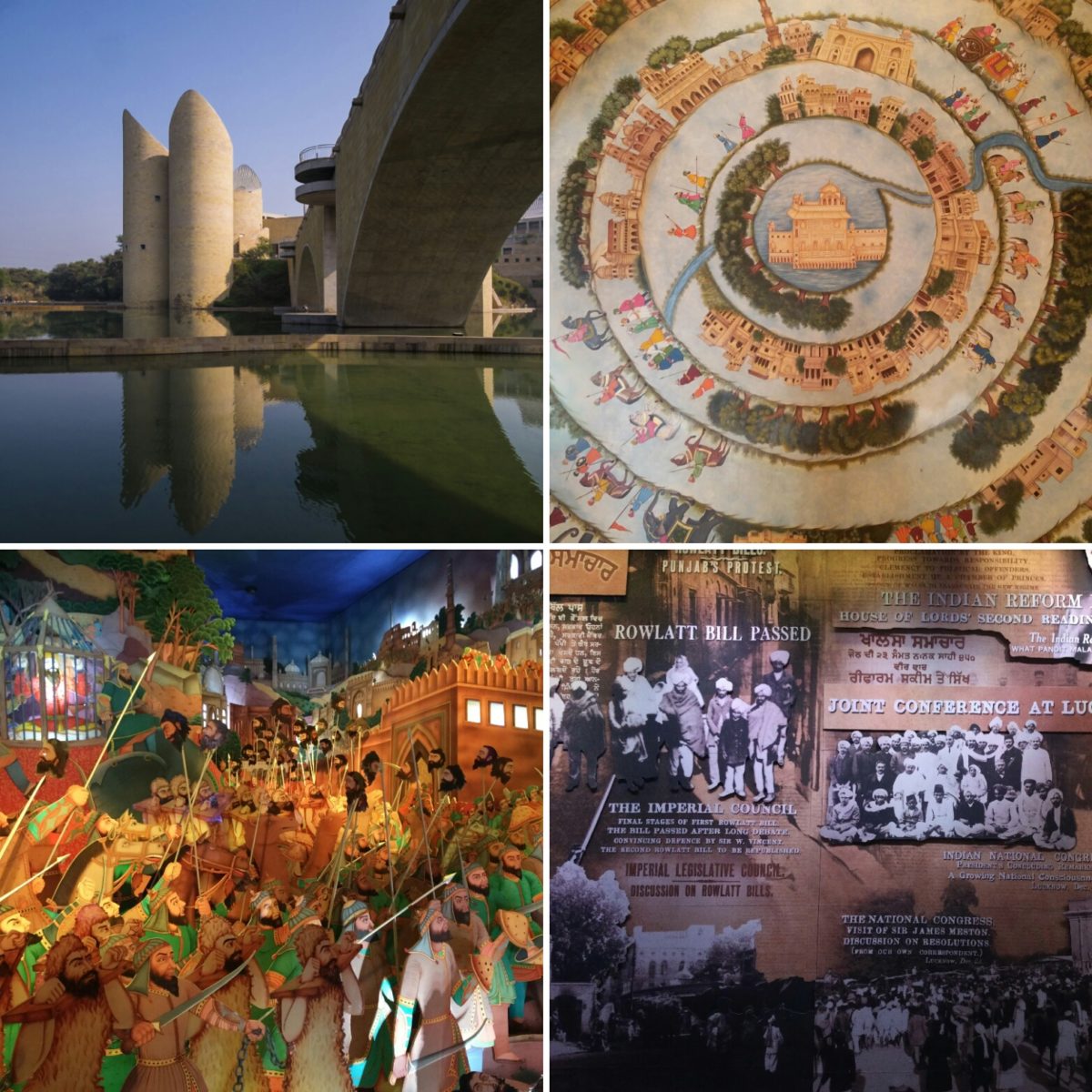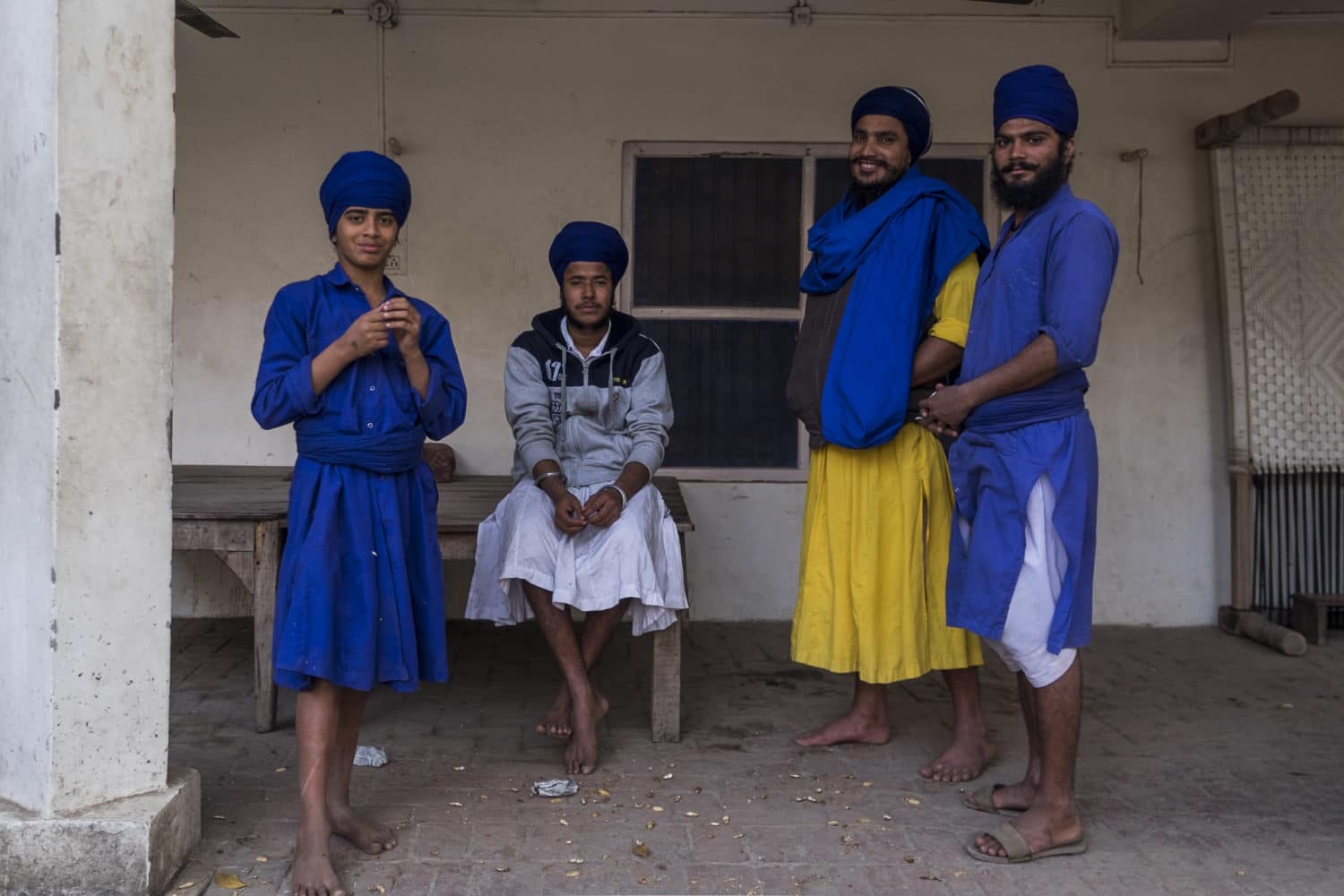In 1499, Nanak Dev founded a unique religious faith rooted in values of humanism, liberalism and pluralism. He sought to move away from the dogmas he had seen in other religions, and preached a new one where social service and justice were paramount in practice of the faith. His teachings were further consolidated by the nine Gurus that followed after him. He came to be known as Guru Nanak, and all subsequent men who led the faith received the title of Guru. Nanak rebelled against institutional religion and believed that rituals divided humanity, thus attempting to create a new faith that moved beyond and focused solely on personal relationships with the faith. The 10th Guru finally abolished the system of a person becoming the Guru, instead the Sikh scriptures, containing teachings and poems by Nanak and those who came after him, that are collected in the Guru Granth Sahib, became the literal embodiment of the eternal Guru. Every Sikh temple or Gurudwara now holds a copy of the granth, and every follower of the faith pays homage to the book.
With a tumultuous history, filled with violence and peace, repression and valour, Sikhism has evolved over time, changing itself where necessary. Today, though it has a body of warriors, it is largely peaceful, practicing the faith as introduced by Nanak, as we witnessed during our travels across the state. While the Harmandir Sahib or the Golden Temple is an important pilgrim spot for all Sikhs, there are several other places across Punjab (as well as in Pakistan) that hold equal importance and see thousands of visitors every day.

Anandpur Sahib was founded in 1665 by the ninth Guru, Guru Tegh Bahadur, and is perhaps the second most sacred site for the religion. It is here in the large sprawling white Gurudwara Takht Sri Kesgarh Sahib, the birthplace of the Khalsa, that we had the langar for lunch, wholesome and filling, and sat on the quiet roof overlooking the town of Anandpur Sahib. Perched on a low hill, the gurudwara affords a sweeping view of the small town, which is filled with white domes and spires in all directions. The little town has one of the highest concentrations of Gurdwaras in the state, something which is apparent as you walk down its narrow lanes. People move about in a slow pace, the weather is a bit hot in the afternoon, and the white places of worship, some with delicate inlay work on the marble, see many who sit in the cool interiors to escape the sun. The white domes all around provide a sense of peace, with the lower Himalayas in the distance. I am not particularly religious but I have to admit that this small town, where the head of the 9th Guru was cremated, filled me with a certain contentment.
Gurudwaras tend to have that effect on people. Immaculately clean, we feel that they should be the norm for how all places of faith, history and heritage are maintained. There is order, quiet and solitude. Usually manned and run by volunteers of all ages, these spaces discriminate against no one, a true embodiment of the social service that the first guru espoused. Any Gurudwara that offers langar (free community kitchen), and most of them do so for at least one meal everyday, feeds everyone, regardless of their religious leaning, gender or age. Here there are no boundaries, everyone is equal with the same plate and utensils, eating the same simple vegetarian food, sitting side by side. Regardless of faith or religion or even if you don’t believe in anything, a visit to a Gurudwara is a must, if nothing else to reinforce your faith in humanity. Because places do exist where there are no divisions, though they are few and far between.

Not far from the Kesgarh Sahib is the Virasat-e-Khalsa, the fantastic museum dedicated to the poignant history of Sikhism and Punjab. The five hundred year old history of the religion and the land, so intricately intertwined with each other, is displayed in an engaging manner through paintings, videos, life size cutouts, murals, and multi media displays, including music and folk song. The museum is large and detailed, and takes a couple of hours to go through. The museum provides an inspiring journey and fascinating insight into the history and culture of the religion and people, from the beginning of the faith till present day. The building itself, surrounded by small ponds and water bodies, is beautiful, with gardens all around and small spaces to sit and reflect. The vision for the project was commemorated in April 1999, the tercentenary year of the birth of the Khalsa, a group of soldiers formally instituted by the tenth guru to maintain peace and justice. While the museum is rather exhausting by the end and can be an overload of information, it is a visual treat and an important place to visit to learn about major events that have shaped our country from a different perspective. The museum is free to all visitors and is open all days of the week, except Monday, from 10am-6pm. Special Exhibits are ticketed.

Anandpur Sahib is also home to one of the largest encampments of the Nihangs, the Sikh guerrilla army created by the Gurus. Dressed distinctively in electric blue (a nod to Shiva) and sporting tall and elaborately adorned turbans, the Nihangs were known for their ferociousness in battle, earning them the moniker of ‘sava lakhi’ or that each was as good as 1.25 lakh of the enemy. The Nihangs, whose role as protectors of the faith has now lost much of its relevance, continue to follow their traditional way of life, living as bachelors around Gurudwaras and other encampments in Punjab. Even today, if you travel to Anandpur Sahib around Holi you will be treated to the sight of hundreds of Nihangs who descend on the town for the ‘Holla Mohalla’, where they show off their horse riding and skills with weapons with great dexterity and deftness. Thousands of devotees also throng Anandpur Sahib to celebrate Holla Mohalla, transforming the town into one large colourful celebration, bringing together joy and spirituality, so reminiscent of the Punjabi people and their way of life.
Some Useful Information:
How to get there: Anandpur Sahib is located 85 Kms from Chandigarh which is well connected by road and rail to major North Indian cities. It can easily be done as a day trip from Chandigarh or Ludhiana.
Best time to visit: Hola Mohalla, which usually falls on the day after Holi is the most festive time in the city and the three day fair where the Nihangs show off their skills is a huge draw.
Dont Miss: Besides visiting the Sri Kesghar Sahib and the Virasat-e-Khalsa Museum (keep a couple of hours to leisurely check out its displays), you can also drop in on the Nihang encampment and spend some time chatting with the blue robed warriors and understand their way of life. The Nihangs live behind one of the Gurudwaras at Anandpur Sahib which fall on the street between Sri Kesghar Sahib and the museum and any auto rickshaw should be able to take you there.